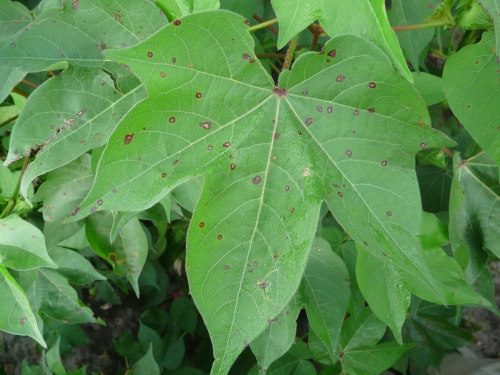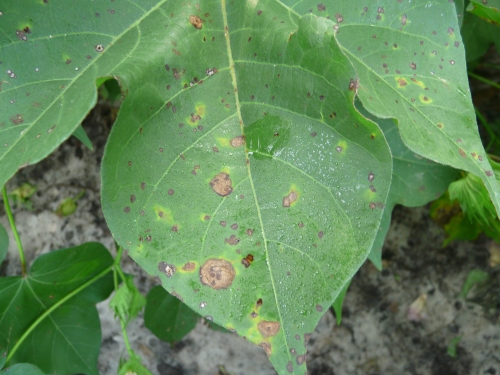By Ronnie Barentine
There doesn’t seem to be any major issues with target spot in cotton, but I do get few calls on various spot that occur. Following is a sampling of the leaf spots that you may see in the field and management.
Stemphyllium Leaf Spot

The underlying cause of this disease is result of deficiency in potassium in the plant. The spots have an ashy-gray centers with a dark purple margin. Sometimes the spots detatch from the leaf giving a “shot hole” appearance. UGA recommends put out all potassium preplant on Piedmont, Coastal Plain, and Deep Sand soils. Split applications of K have not proven to be effective on Tifton type soils. However, foliar K has shown yield difference. UGA Extension Fertility Scientist Dr. Glen Harris says “foliar K applications should automatically be considered on deep sands, low K soils, high Mg soils, high-yield conditions, short season varieties and especially, where severe K deficiencies and leafspots have been observed.” Because this disease is associated with nutrient deficiencies, fungicides are not considered to effective control.
Angular (bacteria) Leaf Spot
